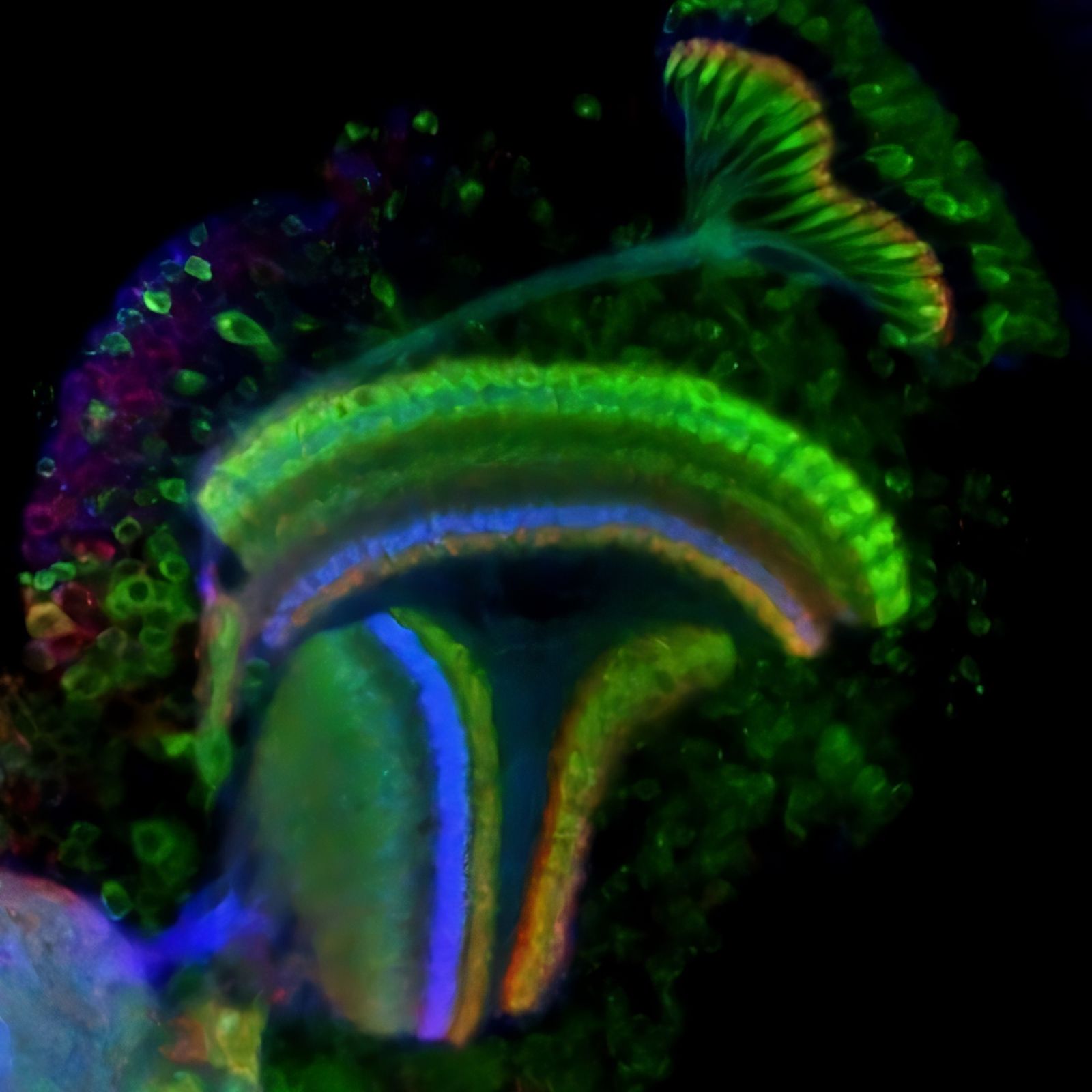Follow us on Google News (click on ☆)
In an article published in Developmental Cell, scientists show how neurons establish their connections in specific layers through adhesion molecules. This research, focused on the visual system of Drosophila, could provide valuable clues for understanding the fundamental mechanisms of circuit development, including in humans.

Developing optic lobe of Drosophila allowing visualization of the stratified expression of different adhesion molecules.
© Laura Quintana Rio, MCD-CBI
The functioning of the brain depends on the meticulous arrangement of billions of nerve cells in distinct physical domains, where each neuron establishes specific connections with dedicated partners. For example, our cerebral cortex is organized into layers, each connecting neurons to different partners, thereby optimizing the efficiency of information processing.
But how do these neuronal layers form, and why are they essential for establishing appropriate connections?
Studying vision in Drosophila
In a study published in Developmental Cell, scientists addressed this question using the fruit fly Drosophila (Drosophila melanogaster). They explored a region of the fly's brain dedicated to detecting visual motion along the up-down and left-right axes. This system relies on four types of neurons, each sensitive to a specific direction of motion. These neurons project their extensions into one of four distinct layers where they establish connections with precise partners to fulfill their function.
Beat and Side molecules: neuronal adhesive tags
The results show that two molecules, called Beat and Side, are crucial in layer organization and neuronal connectivity. They act as adhesive tags on the surface of neurons and their partners. Depending on their expression, they allow neurons to "stick" to the right partners in the appropriate layer.
However, these adhesive molecules are not necessary for the formation of connections. Rather, they facilitate cellular proximity by organizing neurons into layers and ensuring that the correct cells are close enough to establish connections.
Precise positioning, essential for optimal functioning
This study highlights that the precise wiring of the brain requires correct positioning of neurons before connections are established. A faulty initial organization can lead to inappropriate connections and disrupt the overall functioning of the brain.
Thus, this preliminary phase proves essential, much like each piece of a puzzle must be correctly placed to form a coherent image.
Implications beyond Drosophila
By exploring how neurons find their place and partners, this research reveals fundamental rules of brain organization. These mechanisms could also shed light on similar processes in mammals, including humans, paving the way for a better understanding of the early stages of neuronal development.
References
Carrier Y, Quintana Rio L, Formicola N, et al. Biased cell adhesion organizes the Drosophila visual motion integration circuit.
Dev Cell. Published online November 13, 2024.
doi:10.1016/j.devcel.2024.10.019